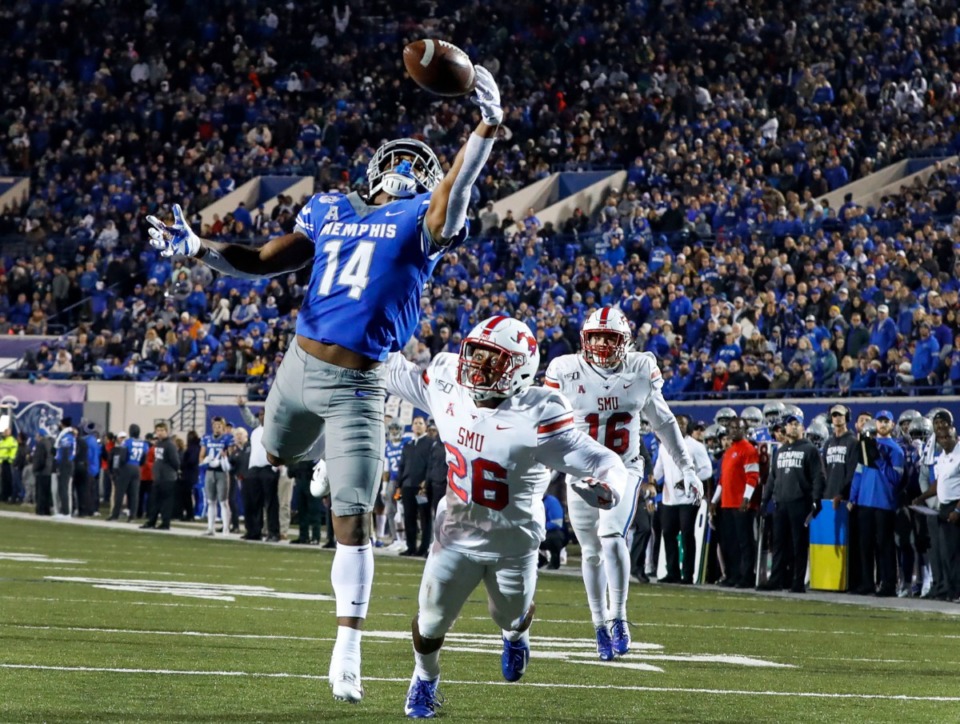
It’s post-Combine, and we now have access to all sorts of athletic testing data that will help us fill in the gaps of profiles and answer questions about the kinds of players that these 2020 running backs are. While we watch these guys on the stopwatch, it’s important to keep in mind what they did on the football field in college: what kind of resumé are they looking to legitimize? Let’s take a look.
THE PROCESS
Disentangling the on-field contributions of a running back from the offensive environment in which he operates, given the bevy of influencing factors at play — scheme, play-calling tendencies, offensive line play, surrounding skill position talent, etc., etc., etc. — is not a straightforward task. One way in which I make an attempt to see through this mess is by measuring the degree to which a runner is over- or under-performing the per-carry contributions of the other running backs on his team. (If you’re uninterested in the logic behind the process and you just want the color-coded charts, go ahead and skip the next few paragraphs.)
Beginning from the premise that good runners (in theory) do more with what they’re given than bad runners, it stands to reason that, provided players are operating under generally the same conditions (AKA on the same team), better backs should produce more per carry than lesser backs. Using this logic, we can establish a sort of baseline for comparing efficiency between players on a given team; for each RB, we can compare his performance (X) to the collective performance of every other RB on the team (Y). If X>Y (essentially, if dude is doing more with his carries than the other backs on the roster are doing with theirs), the player is probably good.
Assuming that this is a valid way of evaluating RBs against their teammates, we can then extend the comparison to players on other teams. Let’s use the NFL Scouting Combine’s vertical leap test as a metaphor to illustrate how this is done:
The NFL wants to know how high players can jump. In order to do this, they have players stand next to some sort of measuring device with their arm outstretched and mark off how high the player reaches while standing flat. After establishing that baseline, they then have the player jump and attempt to reach the highest point they can. The difference between the baseline standing reach and the highest point of the jump is the player’s vertical leap. The NFL then compares that mark to every other player’s mark to determine how good of a leaper each guy is.
Back to running backs. I want to know how good a player is at running the ball. I first establish a baseline by marking off how efficient his team’s rushing attack is independent of his contributions. Then I measure how high his per-carry performance leaps beyond that baseline (or how low it sinks beneath). The difference between the two reveals the player’s effectiveness as a ball carrier. I can then compare to other players in other situations (just as the NFL can compare the vertical leap of a 5’7″ guy to that of a 6’8″ guy) to determine who is the better runner (or, at least, to determine who has been the most efficient runner, if we want to keep things strictly descriptive).
The metrics I use to measure efficiency and compare players in this way are: Yards per Carry, Chunk Rate (rate of 10+ yard runs), and Breakaway Rate (rate of 20+ yard runs). A positive number in a metric indicates a player is outperforming his teammates, while a negative figure means he is underperforming them.
Without further ado, here are the rushing efficiency numbers for all 31 Class of 2020 running backs who received a Combine invitation (including Antonio Gibson, a “wide receiver”), from yikes to nice:
THE YIKES
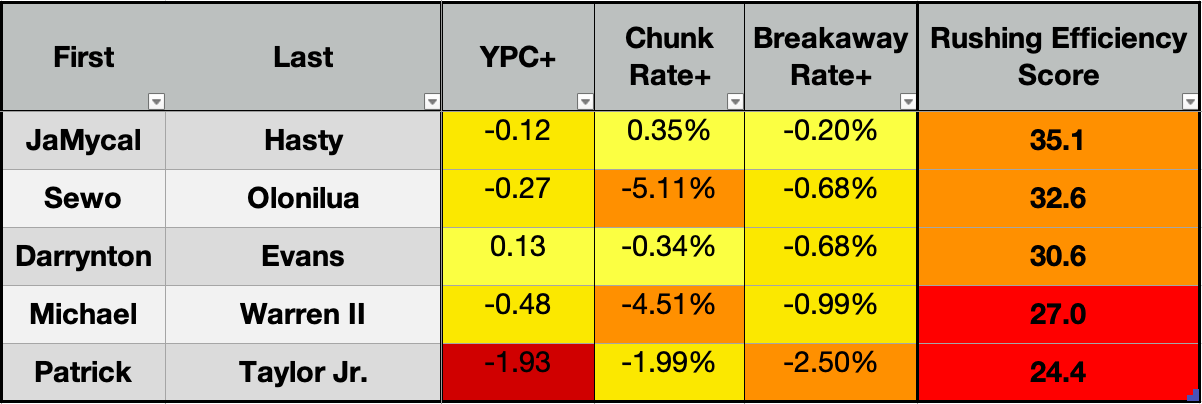
There’s not a lot to get excited about here. Only Appalachian State’s Darrynton Evans gained more yards per carry than his teammates among this group, and only JaMycal Hasty out of Baylor was reaching the second level (10+ yards) more often than his. Nobody was creating big plays.
Each player’s Rushing Efficiency Score is generated on a 0-100 scale by comparing the percentile ranks of their numbers here to every other running back in my database (which dates back to 2007). This composite also takes into account the performance of their team’s offensive line, the overall quality of team they played on, as well as the quality of players with whom they shared a backfield.
Patrick Taylor‘s composite score is in the bottom 6% of 387 total in my database.
THE MEH
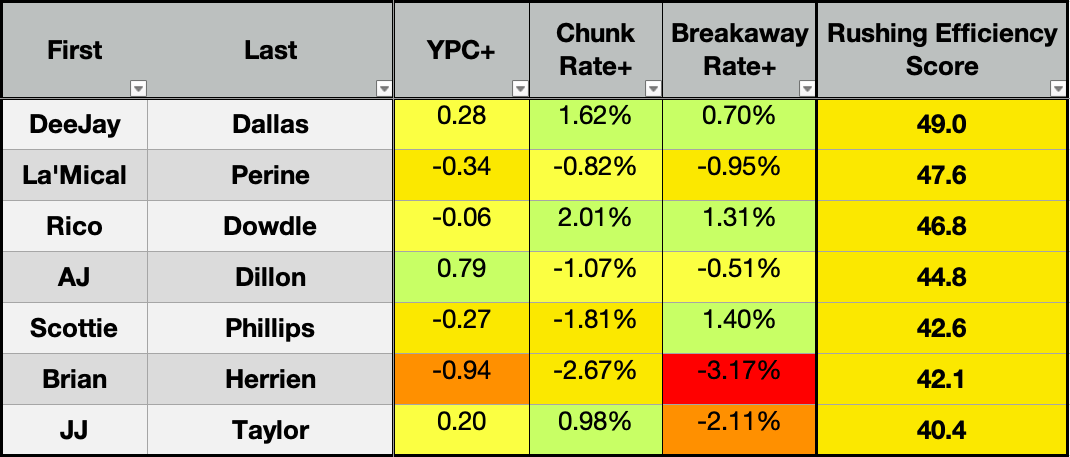
This group is a bit more interesting. Popular sleeper pick DeeJay Dallas out of Miami checks in just below average, outperforming his backfield teammates in each of our three metrics.
Scottie Phillips of Ole Miss looks like a player who breaks off long runs and not much else, whereas Boston College’s 247-lb. AJ Dillon is pretty much the opposite; he outdid his teammates on a per-carry basis, but he wasn’t extending plays downfield. La’Mical Perine played with a strong RB group at Florida, but failed to separate himself.
THE AIGHT
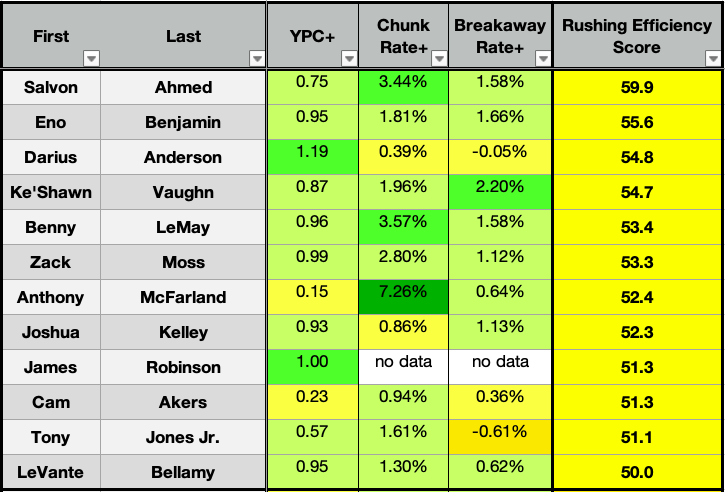
Now we start seeing some legit talents. Florida State’s Cam Akers is a highlight here. Considering that he handled heavy volume behind a 2nd-percentile offensive line and alongside 97th-percentile backfield talent, his outperforming teammates on all fronts and managing a composite score even above 50 is very impressive.
Other players here, like Utah’s Zack Moss, Charlotte’s Benny Lemay, and Vanderbilt’s Ke’Shawn Vaughn, stood out among mediocre surrounding talent, while guys like Anthony McFarland from Maryland and Salvon Ahmed from Washington proved to be dynamic threats who frequently extended runs into the secondary.
THE LEGIT
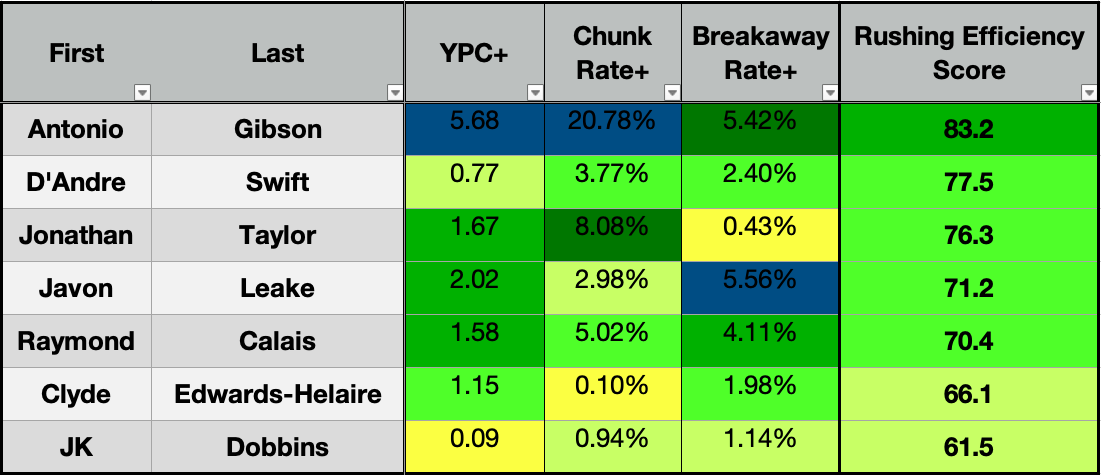
I’ll just get it out of the way: Antonio Gibson‘s 5.68 YPC+ mark is the highest in my entire database, as is his Chunk Rate+ number — some teams don’t even rip off 10+ yard runs at a 20% clip, and he was beating his team by that much. His composite score is the 10th-highest among all players. Dude’s an intriguing, talented player, and he deserves credit for making the most of his touches, but he was playing a unique role in a wide-open system at Memphis. *shrug emoji*
Most of the other guys on this list are the usual suspects found at the top of many 2020 rookie RB rankings. Ohio State’s J.K. Dobbins, LSU’s Clyde Edwards-Helaire, and Georgia’s D’Andre Swift all outpaced high-quality teammates at powerhouse programs, with Swift the most impressive of the three on the ground.
Raymond Calais out of Louisiana and Javon Leake out of Maryland are two guys who were tremendous in low-volume roles in college. It remains to be seen what the NFL thinks of them as overall talents, but both could be interesting fliers on taxi squads.
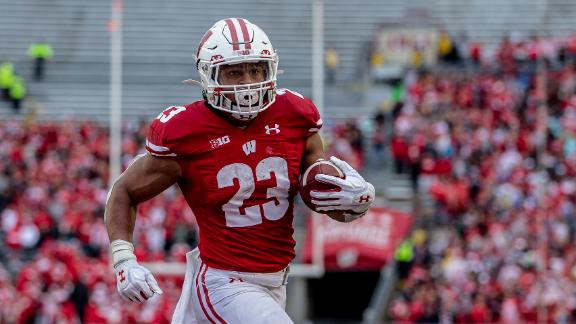
The pure-runner crown jewel of this rookie class Wisconsin’s Jonathan Taylor. He ripped off 10+ yard runs at a 94th-percentile clip while outgaining his teammates by more than a yard-and-a-half every time he carried the ball. Considering his well-documented long speed, it’s ironic that Taylor’s least impressive metric is easily his Breakaway Rate. The Combine will put to rest all of the ridiculous questions about that aspect of his game, and I anticipate him making frequent long-distant trips to the endzone as a pro.
https://platform.twitter.com/widgets.jsWATCH: We compared #NFL draft prospect Jonathan Taylor’s HS to his collegiate max speed. Taylor was clocked at +21 MPH while in HS & @BadgerFootball 💨#myRAmaxspeed @ChrisWesseling@Rotoworld_Draft @TonyPauline #NFLDraft | #NFLCombine | @NFLDraft pic.twitter.com/Le7BHFZl0h
— Recruiting Analytics (@RecruitAlytics1) February 11, 2020
